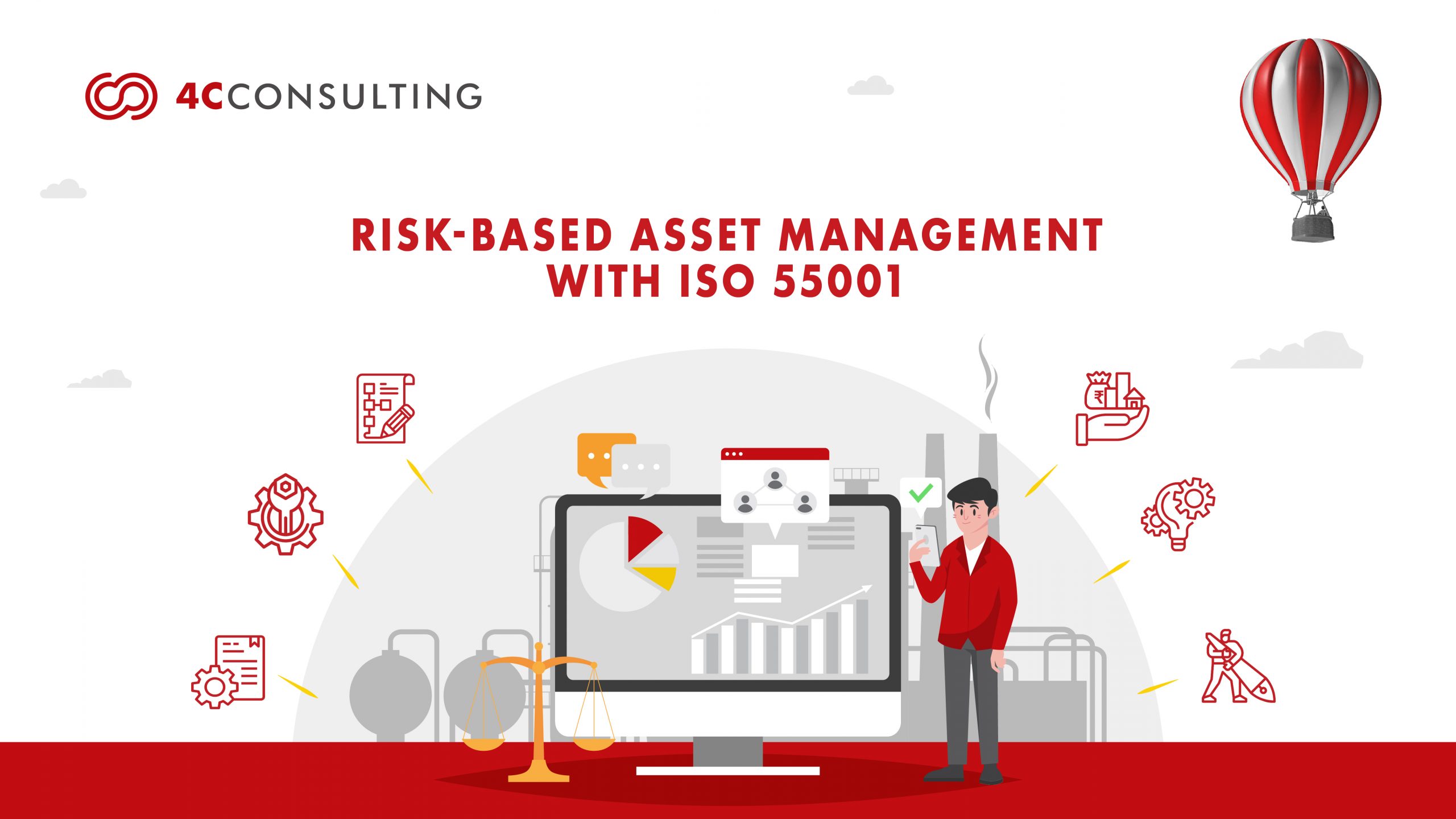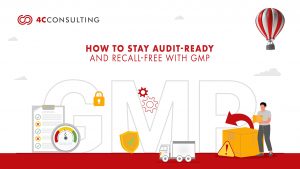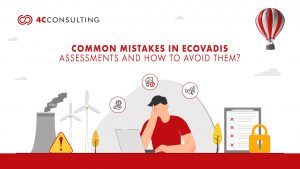
Risk-Based Asset Management with ISO 55001
21st Nov, 2025
In manufacturing and process industries, asset reliability directly impacts production output, maintenance cost and safety performance. Many facilities still rely on reactive maintenance responding to breakdowns rather than preventing them. This approach leads to unplanned downtime, higher repair costs and inconsistent asset-health visibility.
This standard is a structured Asset Management System (AMS) built on risk-based decision-making. Through planned ISO 55001 implementation, organizations can evaluate how each asset contributes to business goals, identify potential risks and design maintenance strategies based on evidence instead of assumptions.
This case study demonstrates a practical application of risk-based asset management under the ISO 55001 framework. It outlines how a manufacturing facility used systematic asset-based risk assessment to improve reliability, reduce maintenance costs and align asset performance with long-term business objectives.
Understanding ISO 55001 Standard:
ISO 55001 provides a globally recognized framework for managing assets throughout their lifecycle. It ensures that every asset decision from purchase to replacement is aligned with business objectives and performance goals.
The standard integrates asset management with organizational strategy, enabling better planning, resource utilization and accountability. It also helps organizations transition from time-based maintenance to performance-based decision-making.
Core components of ISO 55001 include:
- Asset Planning: Aligning performance targets with business needs.
- Risk Management: Addressing threats and opportunities affecting reliability.
- Lifecycle Control: Managing assets from acquisition to disposal.
- Performance Evaluation: Monitoring maintenance KPIs and efficiency.
- Continuous Improvement: Refining processes to enhance performance and reliability.
Achieving ISO 55001 certification validates that an organization’s asset management practices are structured, data-driven and focused on long-term value creation. By implementing ISO 55001, organizations can transform reactive maintenance cultures into proactive, risk-aware asset management environments that drive measurable business value.
Case Study: Implementing Risk-Based Asset Management in line with ISO 55001
A mid-scale manufacturing facility faced frequent equipment breakdowns, inconsistent maintenance practices and rising operational costs. Although preventive maintenance was in place, it was largely time-based and failed to consider asset condition or operational criticality.
To improve reliability and cost control, the organization adopted the ISO 55001 asset management framework to establish a structured, data-driven approach. The goal was to move from routine maintenance to risk-based asset management that prioritized assets based on performance impact, safety relevance and business continuity.
Key implementation objectives included:
- Developing a formal Asset Management System (AMS) aligned with ISO 55001 requirements.
- Identifying critical assets through structured asset-based risk assessment.
- Reducing downtime and improving overall equipment reliability.
- Optimizing lifecycle costs while ensuring compliance and safety.
Under the guidance of experienced ISO 55001 consultants, the team conducted a comprehensive review of its asset inventory, maintenance records and historical failures. This assessment established asset criticality, created a verified asset register and laid the groundwork for implementing targeted risk evaluation forming the foundation for ISO 55001 certification and long-term reliability improvement.
Conducting the Risk-Based Asset Assessment
- Forming the Asset Management Team: A risk-based asset assessment begins with forming a multidisciplinary Asset Management Team comprising maintenance, production, safety and finance representatives. Each brings a different lens technical reliability, operational continuity, safety compliance and lifecycle cost. The team’s first task is aligning the Asset Management Policy and Objectives with business goals to ensure that risk evaluation supports measurable outcomes such as reduced downtime, optimized maintenance cost and improved reliability. Roles and responsibilities are clearly defined so decisions are based on data ownership, not hierarchy. This cross-functional accountability prevents fragmented maintenance planning and ensures that risk mitigation becomes part of daily operations rather than a standalone exercise.
- Establishing the Asset Register and Determining Criticality: The process starts with creating a verified Asset Register, capturing details like tag number, function, capacity, installation date and maintenance history for all major equipment compressors, pumps, boilers, transformers and control systems. Field verification is essential to validate actual operating conditions, dependencies and redundancy. Once verified, each asset is ranked using a Criticality Assessment that evaluates production impact, replacement lead time, safety relevance and cost implications. The output is a Critical Asset Register, which prioritizes where detailed risk evaluation should focus.
| Criticality Level | Example Assets | Impact & Required Action |
|---|---|---|
| High | Main Air Compressor, Boiler Feed Pump | Direct production loss and safety exposure – continuous monitoring |
| Medium | Cooling Tower Motor, Process Pump | Moderate impact – preventive maintenance optimization |
| Low | Utility Fans, Lighting Panels | Minimal production dependency – routine maintenance |
.
- Identifying Potential Asset Risks: With critical assets identified, the next step is recognizing possible failure modes and external or internal threats. Historical maintenance data, inspection logs and operator feedback are analysed to identify weak links. Typical risks include bearing seizure, seal leakage, corrosion, insulation failure and process control malfunction. These risks are documented in a Risk Register, which acts as a live record linking each failure mode with probable cause, detection method and assigned owner. This structured documentation ensures traceability and allows periodic reassessment as operating conditions evolve. For example, during assessment, the team found repeated seal failures in a process pump that caused unplanned stoppages. Root-cause analysis revealed lubricant contamination as the trigger, prompting optimized maintenance intervals and better filtration controls.
- Evaluating Risk Severity and Probability: Each risk is evaluated for likelihood of failure and severity of Likelihood is derived from indicators such as Mean Time Between Failures (MTBF) and downtime frequency, while consequence reflects potential loss in production, safety, or environment. The combination of these values produces a Risk Priority Number (RPN) that ranks the urgency of response. This ranking helps maintenance teams focus efforts on high-impact areas where failures could disrupt operations or compromise safety, ensuring maintenance budgets are spent on the most value-critical assets.
- Developing Mitigation and Control Strategies: Mitigation strategies are designed based on RPN results. High-risk assets are brought under condition-based or predictive maintenance programs such as vibration analysis, thermography, or oil-condition monitoring. For moderate risks, preventive controls like improved alignment, optimized lubrication and spare-part standardization are implemented. All actions are captured in a Preventive and Predictive Maintenance Plan, with timelines and responsibilities defined. Trend analysis is periodically reviewed to verify effectiveness and identify emerging risks before they escalate.
- Integrating Risk Data into the Asset Management System: For risk management to remain effective, data must be centralized within an Asset Management Information System (AMIS). The system consolidates performance data, maintenance costs and real-time condition metrics for every asset. Dashboards track KPIs such as reliability index, mean downtime per asset and maintenance cost per unit. This integration supports data-driven decision-making and ensures that improvements are sustained through continuous visibility and review. Such integration reflects ISO 55001’s core focus on aligning asset information management with organizational strategy and operational control.
- Reviewing and Updating the Risk Framework: Asset risks are dynamic and influenced by changing production loads, environmental conditions and technology upgrades. Scheduled Risk Review Meetings, typically conducted semi-annually, help reassess high-RPN assets, validate control effectiveness and incorporate new data or technologies such as IoT-based sensors and predictive analytics. Updates made to the Risk and Critical Asset Registers ensure that the asset management framework remains current, compliant and capable of supporting long-term reliability objectives.
Practical Outcome
Implementing this structured process helped the facility transition from time-based maintenance to a data-driven asset management model. Within one operating year:
- Downtime reduced by nearly 15 %,
- Preventive maintenance efficiency improved by 12 %,
- High-risk assets were successfully integrated into condition-monitoring programs.
| Metric | Before ISO 55001 Implementation | After Implementation |
|---|---|---|
| Average Downtime (hrs/month) | 62 | 43 |
| Preventive Maintenance Compliance | 68% | 86% |
| High-Risk Asset Failures | 11 | 4 |
.This evidence-based approach demonstrates how risk-based asset management under ISO 55001 improves reliability, optimizes maintenance investment and builds resilient asset performance across industries.
How 4C Consulting Can Help with ISO 55001 Implementation
With 15+ years of consulting experience and 10,000+ training hours 4C Consulting helps organizations implement ISO 55001 in line with global best practices. Our consultants provide end-to-end support from gap assessment, policy formulation and risk evaluation to AMS documentation, training and certification readiness. We combine industry expertise with data-driven methodologies to help clients achieve measurable performance improvement, compliance and reliability enhancement.
Book your Free Asset Management Gap Assessment today and take the first step toward ISO 55001 certification excellence.
FAQs
What is ISO 55001 Asset Management?
- ISO 55001 is the international standard that provides a structured framework for managing physical and intangible assets throughout their lifecycle. It helps organizations align asset performance with business goals, reduce downtime, optimize costs, and make data-driven investment decisions.
What is the risk-based approach to asset management?
- A risk-based approach focuses on identifying, assessing, and prioritizing asset-related risks based on their likelihood and impact. It ensures that maintenance and investment decisions are made strategically to minimize failure probability and maximize asset reliability.
What is risk management in asset management?
- Risk management in asset management involves systematically evaluating potential threats—such as equipment failure, safety incidents, or financial losses and implementing preventive actions to maintain performance and compliance across the asset lifecycle.
What is the risk-based approach in ISO standard?
- Across ISO frameworks, a risk-based approach ensures that decisions and processes are guided by risk assessment rather than reactive measures. It shifts focus from compliance-only actions to proactive identification and control of factors that can affect performance or quality outcomes.
What are the 7 steps of the risk management process?
- The risk management process follows a systematic seven-step cycle to identify and control risks effectively:
- Establish the context.
- Identify risks.
- Analyze risks.
- Evaluate risks.
- Treat or mitigate risks.
- Monitor and review.
- Communicate and consult.
Which ISO standard is for risk management?
- ISO 31000 Risk Management Guidelines provides a universal framework for establishing and maintaining an effective risk management process applicable across industries.
Which ISO standard is used for asset management?
- The ISO 55000 series comprising ISO 55000, ISO 55001, and ISO 55002 defines the principles, requirements, and guidance for implementing an Asset Management System (AMS).
What are the 7 principles of risk management?
- ISO 31000 outlines seven key principles that guide effective risk management:
- Integrated
- Structured and comprehensive
- Customized
- Inclusive
- Dynamic
- Uses best available information
- Considers human and cultural factors
What are the three main steps of the ISO risk management process?
- The ISO risk management process involves three core steps:
- Risk identification: Determine what could affect objectives.
- Risk assessment: Analyze and evaluate risks based on likelihood and impact.
- Risk treatment: Implement measures to reduce, transfer, or control the identified risks.



